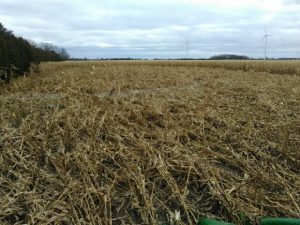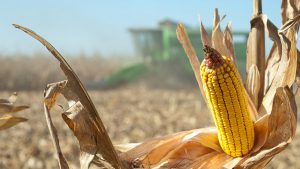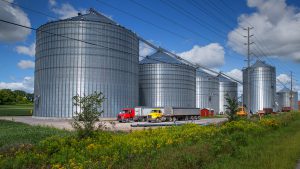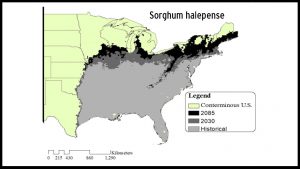Maximizing soybean yields
MANAGING HARVEST
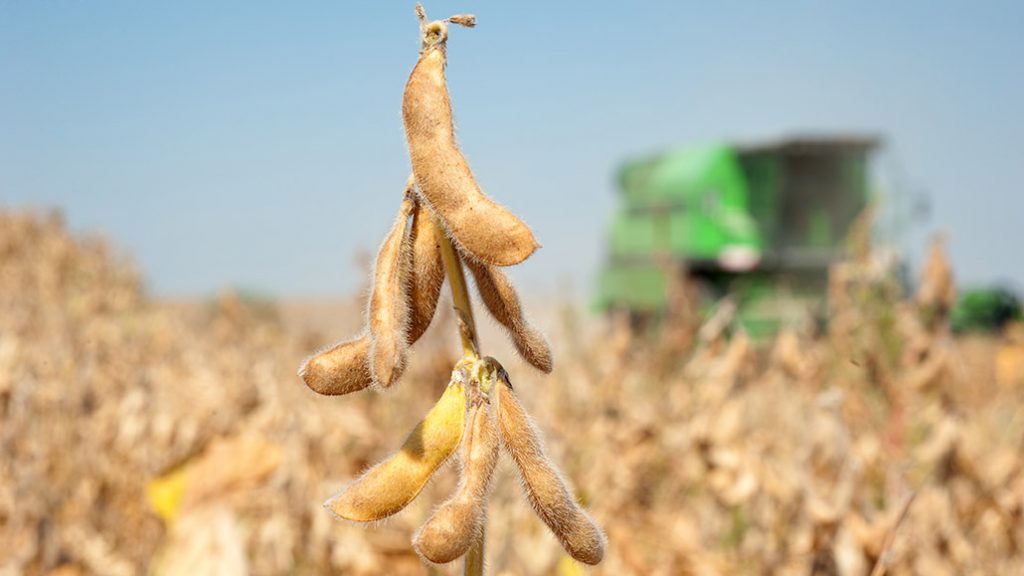
THIS SPRING WAS one of the latest, wettest, and chilliest in quite a while, which made planting of all crops a challenge. These conditions, ironically, might actually result in the largest soybean acreage ever in Ontario, and the harvest could be quite good, as long as the weather cooperates.
Due to the wet spring and also the harsh past winter, a large percentage of wheat did not survive, and very little spring cereals or canola were planted in Ontario. The planting window for corn also closed for some farmers, and all in all for many farmers, soybeans were the only option.
So, with this year’s late planting and less-than-ideal planting conditions, how can farmers best assess when to harvest their soybean fields? First, let’s look at how much maturation variability at harvest there might be.
Horst Bohner, soybean specialist at the Ontario Ministry of Agriculture, Food and Rural Affairs (OMAFRA), notes that soybeans are not as susceptible to this as other crops are, and he doesn’t expect an unusual amount of it this year. “Because of the photoperiod effect, soybeans ‘even out’ and adjust to the season so a field is usually ready at about the same time,” he explains. “In fact, there may be less variability in 2019 than some years. When it’s dry in the spring, many seeds do not emerge at the same time.”
Les Nichols, Ontario Soil and Crop Improvement Association (OSCIA) president, says that in his immediate area in the south of Bruce County, soybean stands emerged fairly evenly. However, he says, “north of here, it’s heavy clay and things were different.”
Indeed, Chad Anderson, OSCIA director for the St. Clair region, notes that the stands were quite uneven in his area, especially in the bottom half of Lambton County. “It’s not pretty around here and some fields went unplanted,” he says.
“The situation is particularly a problem for anyone in food grade production,” Anderson adds. “Seed size might be okay if we get good moisture in August, but the variability in maturity makes it difficult to produce a good sample of white hilum beans, both from a dirt tag situation as well as the ability of receivers to deal with beans over 16 per cent moisture.”
MATURATION
The most critical factor in achieving soybean yields as high as possible this year, says Nichols, is how much moisture is received from here on in. “The harvest will be later, but it may not be much later,” he notes. “If we get a reasonable summer with average heat and timely rains, we are looking at a timely harvest. But we might have immature beans in September.”
Bohner agrees that later maturation could be a real issue depending on the weather in September and October. “Since we do not know what conditions will be like this fall, it’s hard to speculate what the problems will be,” he says, “other than an early frost, which would be devastating.”
One important thing you can do to improve yield and accelerate harvest, advises Jim McComb, an agronomist with the Earth Dirt Soil consultant group, is keep your fields clean of weeds. This will reduce the need for a pre-harvest burndown. He adds that fleabane, nightshade, and other weeds in fields where soybeans are struggling can plug combine knives. “A new set of knives and guards,” he notes, “may be a good investment this season to improve how evenly the crop feeds.”
Michigan State University Extension soybean educator Michael Staton noted in a recent online article that because late-harvested soybeans will be tough and difficult to cut, it’s critical to have the cutter bar in top condition and properly aligned.
MOISTURE
McComb notes however, that when soybeans contain 18 per cent moisture, “they are pretty hard to damage, so we can speed up the rotor and they will bounce through undamaged.” He adds that verifying crop loss behind the combine will help augment the manufacturers-suggested settings.
If the soybeans are higher in moisture, Staton advises that good threshing and uniform feeding can be achieved by keeping the threshing cylinder/rotor full. “Draper heads and air-assisted reels will improve the uniformity of feeding,” he states. “If threshing is not satisfactory, try reducing the concave clearance first. This may increase plugging problems at the cylinder/rotor if the straw is tough. If plugging is a problem or unacceptable threshing occurs, increase the speed of the cylinder or rotor. Make incremental adjustments and check threshing performance and grain quality after each adjustment.”
Farmers will need to start soybean harvest, says McComb, when the soybeans get below 20 per cent moisture, if the stems aren’t too green. University of Nebraska-Lincoln Extension educators Gary Zoubek and Chuck Burr note that if you are putting soybeans in a bin equipped for drying grain, start harvesting at 16 to 18 per cent moisture and aerate down to 13 per cent. To harvest as many soybeans as possible at 13 per cent, they advise in a recent Cropwatch article that “what appears to be wet from the road may be dry enough to harvest… avoid harvesting when beans are driest, such as on hot afternoons, to maintain moisture and reduce shattering losses.”
In terms of total yield this year, McComb believes that although Ontario is not likely to enjoy the record Ontario 53 bushels/acre average reported by Agricorp last year, the potential remains for 45 bushels/acre this year with good conditions.
“There are a lot of wet zones in the fields that have limited rooting,” he adds. “Restricted root growth will reduce the plants’ ability to uptake potash in a dry August, resulting in poor pod fill. We will sure know where to direct our future tiling efforts!”
READ MORE
• Recommendations for a late soybean harvest, Michael Staton, Michigan State University Extension,
www.canr.msu.edu/news/recommendations_for_a_late_soybean_harvest
• Managing soybean harvest timing, moisture to improve yield, Gary Zoubek and Chuck Burr, University of Nebraska-Lincoln extension educators, https://cropwatch.unl.edu/managing-soybean-harvest-timing-moisture-








